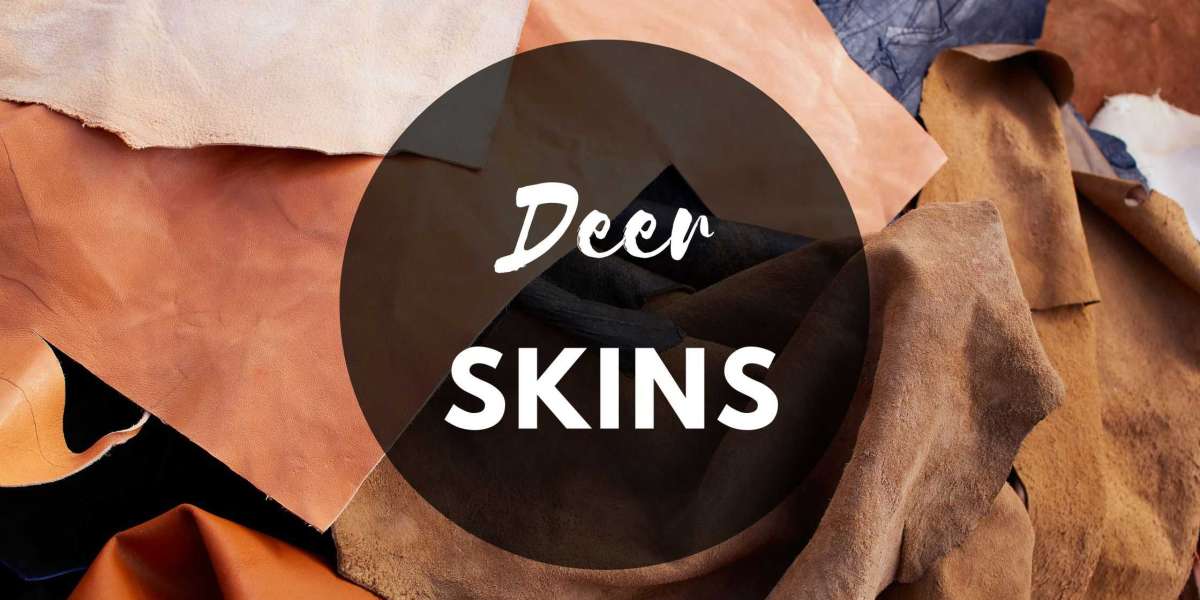When winter arrives, we often think about warm coats, cozy blankets, and ways to stay safe from the cold. But did you know that one of the oldest materials used to keep warm in winter comes from a common animal—the deer? For thousands of years, people have used deer skins to make clothes, blankets, and other items that help keep us warm during the colder months. In this article, we’ll learn about the history, uses, and special qualities of this natural material, and why it remains valuable today.
A deer’s hide is the soft, flexible, and durable outer covering of the animal. After it is carefully treated and processed, it becomes a valuable material for making clothing and accessories. The process of transforming raw hides into usable leather is known as "tanning," a method that has been practiced for thousands of years.
The History of Using Deer Leather
Humans have been using animal hides, especially those from deer, for a very long time. Long before factories and stores existed, Native American tribes, as well as many other cultures around the world, relied on these materials to create clothing, shelter, and everyday items. When hunting deer for food, they would also use the hide to make warm clothing, shoes, and blankets. Since deer are common in many areas, their hides became one of the most important resources for making clothes.
In ancient times, the process of preparing animal hides involved scraping off any remaining flesh, fat, or hair. Afterward, they were dried, smoked, or soaked in special solutions to make the hide soft and durable. Once this process, called tanning, was complete, the hides could be turned into jackets, pants, mittens, and boots. While modern materials like wool, cotton, and synthetic fabrics are often used today, leather remains prized for its warmth and softness.
Why Are Deer Skins Great for Winter?
Animal hides, particularly those from deer, have several qualities that make them ideal for winter clothing:
- Warmth: The natural insulating properties of deer hide trap body heat, keeping you warm even in cold weather. It can often be warmer than materials like cotton or wool because it is so effective at holding heat.
- Water Resistance: Deer leather also has a natural resistance to moisture. While it isn’t fully waterproof, it can repel rain or snow when treated properly. This makes it an excellent choice for outdoor items like boots and gloves that are exposed to wet conditions.
- Durability: Leather from deer is tough and resilient. It doesn’t tear easily, which is important for items like jackets and gloves that are worn frequently in harsh winter conditions. Its toughness means products made from it can last a long time, even in cold and rough weather.
- Softness: Unlike some other types of leather, this particular hide is known for being soft and flexible. It doesn’t feel stiff, making it comfortable to wear. This softness is why many people still choose it for gloves, boots, and other cold-weather accessories.
How Deer Leather Is Used in Winter Clothing
Leather from deer can be crafted into a variety of winter clothing and accessories. Here are some of the most common uses:
- Gloves: In winter, keeping your hands warm is important. Gloves made from this leather are soft, and flexible, and provide excellent protection from the cold. Their comfort makes them a popular choice for hunters, outdoors enthusiasts, and everyday people.
- Boots: Another great use for this leather is in winter boots. These boots are durable, warm, and comfortable. They help keep your feet dry and cozy, even when walking through snow or wet conditions. For centuries, people in cold climates have relied on these boots for warmth.
- Jackets and Coats: Leather jackets made from deer hides are strong enough to protect against wind and cold, yet soft enough to allow for easy movement. These items are especially useful for outdoor activities like hiking or hunting.
- Blankets: Beyond clothing, this leather can also be used to create blankets. These blankets are incredibly warm, making them perfect for cold winter nights. Native American tribes and other cultures have used them for generations to stay warm.
- Hats and Headgear: A leather hat can be a great option for keeping your head warm in winter. Just like gloves and boots, hats made from this material provide both warmth and protection from the cold, especially in regions with harsh winters.
Modern Uses of Deer Leather
Today, while many people still use leather for traditional clothing and items, modern technology has allowed for more creative uses. Some people continue to hunt and tan hides, while others buy leather skins and hides from suppliers. In addition to clothing, leather is sometimes used to make furniture like leather couches or even used in art projects.
In some parts of the world, hunting animals for their hides is still an important cultural tradition. For instance, certain Native American tribes continue to use these materials for ceremonies and crafts. However, today, the hides are often obtained through regulated and ethical hunting practices, where the animal is hunted responsibly, and both the meat and leather are used.
How Deer Leather Is Processed and Prepared for Use
Before a hide can be turned into gloves, boots, or other items, it must undergo a process called tanning. This process helps transform the rawhide into soft, flexible leather that is useful for making clothing.
- Skinning: The first step is to carefully remove the hide from the animal. This has to be done carefully to avoid damaging the material.
- Cleaning and Scraping: Once the hide is removed, it’s cleaned of any remaining flesh, fat, or hair. Special tools are used to scrape off these extra layers.
- Soaking or Smoking: After cleaning, the hide is soaked in special solutions or smoked to make it soft and more flexible. The tanning process also helps preserve the hide, preventing it from rotting.
- Drying: Once the tanning is complete, the hide is carefully dried. If it is not dried correctly, it could become stiff and unusable. After drying, the leather is ready to be crafted into products like gloves, jackets, or boots.
Conclusion
Leather from deer has been used for thousands of years to create clothing and products that help keep people warm during the winter. Its natural warmth, water resistance, and softness make it ideal for cold-weather gear like gloves, boots, jackets, and blankets. While modern materials have changed how we create clothes today, leather from these animals remains an important and valued material for winter gear, especially in cold regions. Whether you’re learning about history or just trying to stay warm, deer leather plays a key role in how people have kept cozy for generations.


